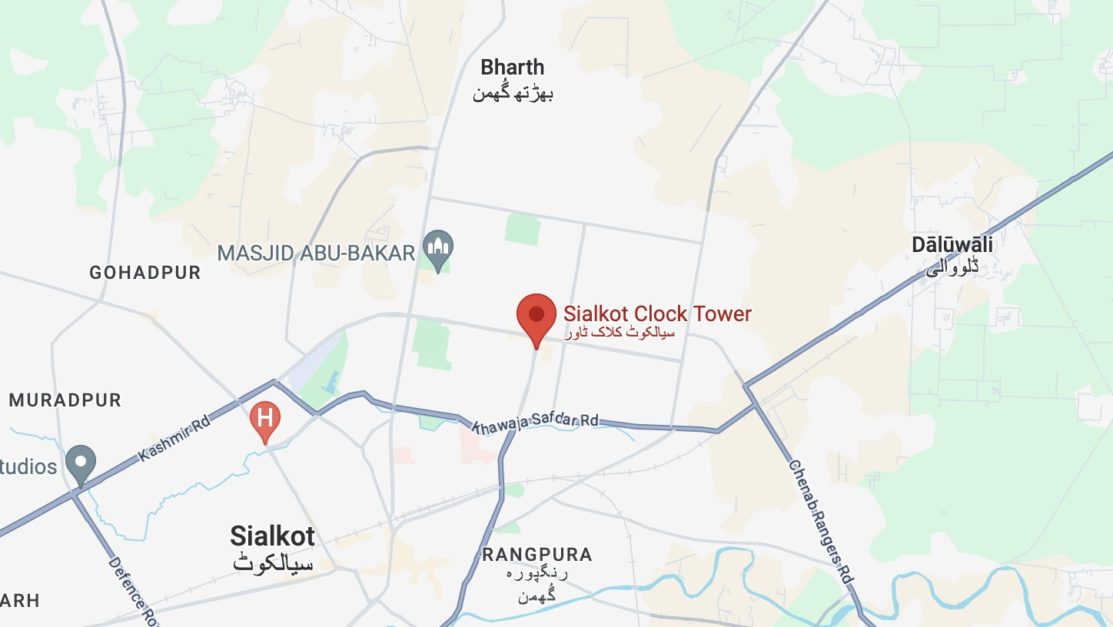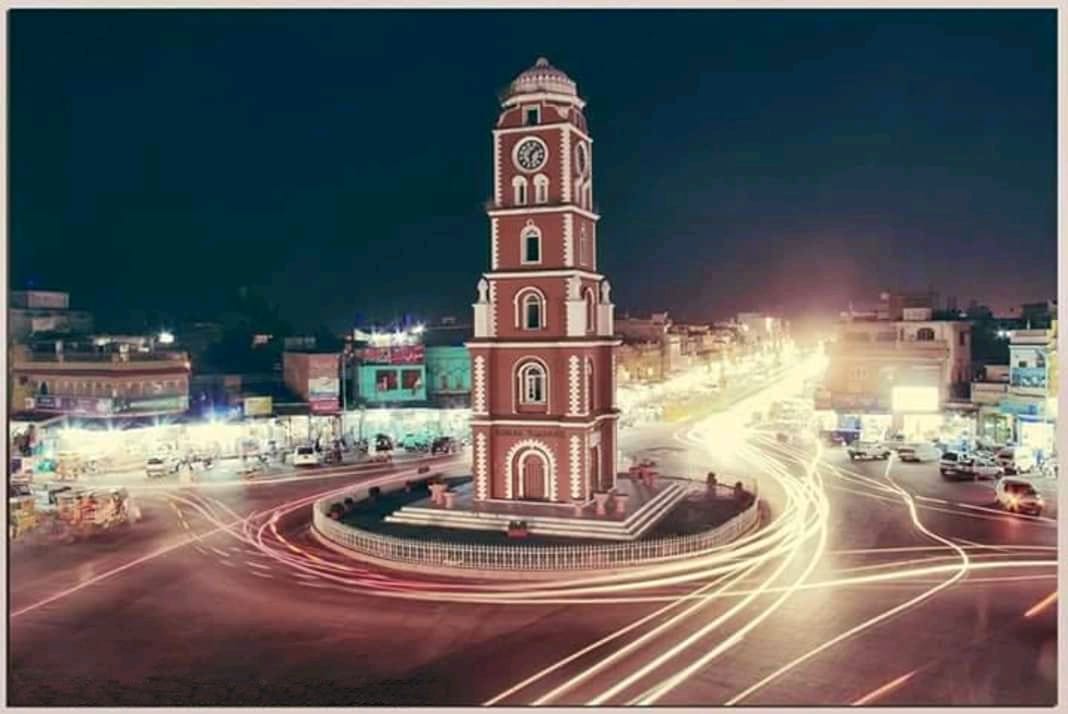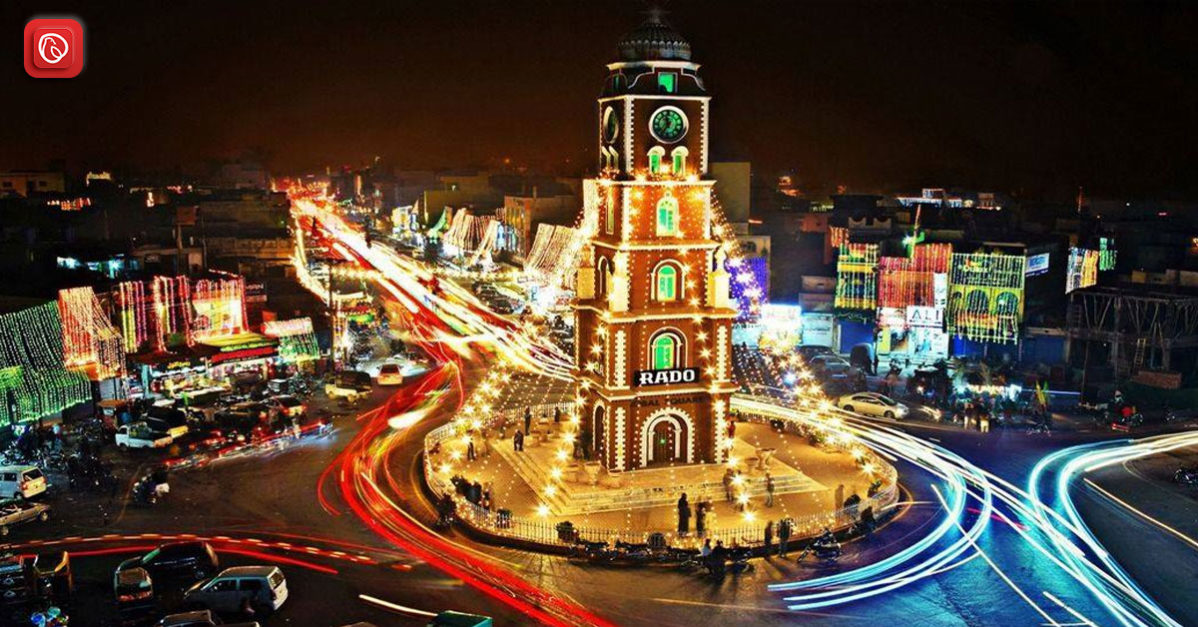The Sialkot Clock Tower, also known as Iqbal Square, is located in Saddar Bazar, Sialkot Cantonment, Pakistan. The structure has stood for more than one hundred years and has undoubtedly witnessed many periods of significant change and unrest.
The clock tower has undergone numerous renovations over time; however, its essential design has remained essentially unchanged. A Hindu temple once stood adjacent to the clock tower, but it was regrettably demolished during the riots in 1992. These riots were a reaction to the dismantling of the Babri Masjid in Ayodhya, Uttar Pradesh, India.
In this blog, Graana.com provides a comprehensive guide to the historic landmark of the clock tower Sialkot. If you want to learn more about it, visit Graana.com.
Location

The Sialkot Clock Tower, also known as the Iqbal Square, is a prominent landmark in the heart of Sialkot City, Punjab, Pakistan. Located within the bustling Saddar Bazaar of the Sialkot Cantonment area, this historic building has become a central hub that tells time and is one of the top tourist attractions in Sialkot.
Standing tall in the city centre, the clock tower boasts a unique design. Four clock faces adorn its sides, ensuring visibility from all directions. Atop the building, a grand clock takes centre stage, chiming every hour to mark the passage of time.
While information regarding specific nearby roads is unavailable, navigating to the clock tower should be straightforward due to its central location. For precise reference, the coordinates of the Sialkot Clock Tower are 32°30′58″N 74°33′23″E.
The surrounding area is filled with numerous small shops, adding to this iconic landmark’s vibrant atmosphere. More than just a timepiece, the Sialkot Clock Tower is a monument to the city’s rich history.
Its presence in the centre of Sialkot reflects its significance and enduring presence over time. Whether visiting the bustling shops nearby or simply admiring its architectural details, the Sialkot Clock Tower offers a glimpse into the heart of this Pakistani city.
Navigating to the Ghanta Ghar
Here’s a breakdown of the options required to reach Ghanta Ghar.
By Car
- Estimated Time: Varies depending on your starting location within Sialkot.
- Directions: Use a navigation app like Google Maps and set “Sialkot Clock Tower” as your destination. This will provide real-time traffic updates and the fastest route.
Via Rickshaw/Taxi
- Estimated Time: 10-20 minutes, depending on traffic conditions.
- Directions: Haggling a fare beforehand is common. Inform the driver you want to go to “Clock Tower” (Iqbal Square).
By Public Transport
- Estimated Time: 20-45 minutes, depending on the bus route and traffic.
- Directions: Identify public buses heading towards Saddar Bazaar. Ask the driver or conductor if they stop near the Clock Tower. Popular bus routes operating in Sialkot might include routes serving Cantonment, Civil Lines, or College Road.
Additional Tips
- Since the Clock Tower is centrally located, reaching it shouldn’t be too challenging.
- If using public transport, consider asking locals for guidance on specific bus routes that stop near the Clock Tower.
- During peak hours, expect heavier traffic, potentially impacting travel times.
Historic Significance

The Sialkot Clock Tower, also known as Iqbal Square, stands tall in the heart of Sialkot City, Pakistan. This prominent landmark boasts a rich history that stretches back over a century.
- British Legacy: Constructed by the British sometime in the 19th century (the exact year is unknown), the clock tower served as a symbol of their colonial rule in the subcontinent. Following a trend seen across British India, the tower was likely built to enhance the city’s skyline and establish a sense of order.
- Architectural Details: While the exact number of stories remains debated (sources mention four or five), the clock tower features a unique design. Four clock faces adorn its sides, ensuring visibility from all directions, and a grand clock with Roman numerals graces the top floor, chiming every hour.
- Enduring Presence: Although the clock tower has undergone several renovations, its core structure has remained unchanged. This enduring presence reflects the tower’s significance as a historical landmark in Sialkot.
- A City Monument: The clock tower has transcended its original purpose. Today, it serves as a central gathering point, attracting visitors and acting as a beloved monument for the people of Sialkot.
- Shifting Importance: There are conflicting views on the clock tower’s current importance. While some sources suggest it lost practical significance in the modern era, others emphasize its enduring status as a historical landmark and a vibrant hub in the city’s heart.
Despite this ambiguity, the Sialkot Clock Tower remains a silent witness to the city’s transformations. Its presence offers a tangible link to the past, reminding visitors and locals alike of Sialkot’s rich history.
The Sialkot Clock Tower as a Tourist Spot
Standing tall in the heart of Sialkot, Pakistan, the Clock Tower, also known as Iqbal Square, offers a unique blend of historical significance and vibrant local charm for tourists. Here’s why it should be on your itinerary:
A Historical Gem
- Over a Century Old: Built in the 19th century by the British, the clock tower is a silent witness to Sialkot’s history. Its architectural style reflects colonial influences, offering a glimpse into the past.
- Enduring Symbol: The core structure remains unchanged despite renovations, symbolizing the city’s resilience.
A Central Hub
- Prime Location: Situated in the bustling Saddar Bazaar of the cantonment area, the clock tower finds itself at the heart of the city’s activity.
- Gathering Point: Locals and visitors frequent the area, creating a vibrant atmosphere.
Architectural Intrigue
- Unique Design: The clock tower boasts four clock faces for all-around visibility, making it a practical timepiece and an architectural standout.
- Grand Clock: The large clock at the top, chiming every hour, adds a touch of grandeur and a nostalgic charm.
Beyond the Tower
- Shopping Haven: The surrounding Saddar Bazaar provides a delightful shopping experience filled with local vendors and small shops.
- Exploring Sialkot: The clock tower is a perfect starting point for exploring other historical sites and cultural experiences in Sialkot.
A Simple Yet Memorable Experience
While the Sialkot Clock Tower might not be a grand monument, its historical significance and central location within the bustling bazaar make it a worthwhile stop for any tourist. It offers a glimpse into Sialkot’s past, a vibrant local atmosphere, and a chance to experience the city’s heart.
FAQs
Following are the FAQs.
Where is the Sialkot Clock Tower located?
The clock tower occupies the central location of the Cantt bazaar in Sialkot, Pakistan.
Is it easy to access Clock Tower Sialkot?
It can be accessed quickly, located in the centre of Sialkot.
When was it Constructed?
The famous clock tower was constructed in 1922.
Why was the clock tower constructed, and by whom?
The clock tower was constructed by the British in 1922 to inform visitors about the time.
This was all about Clock Tower Sialkot. For more information on ghanta ghar Faisalabad, visit Graana.com.




